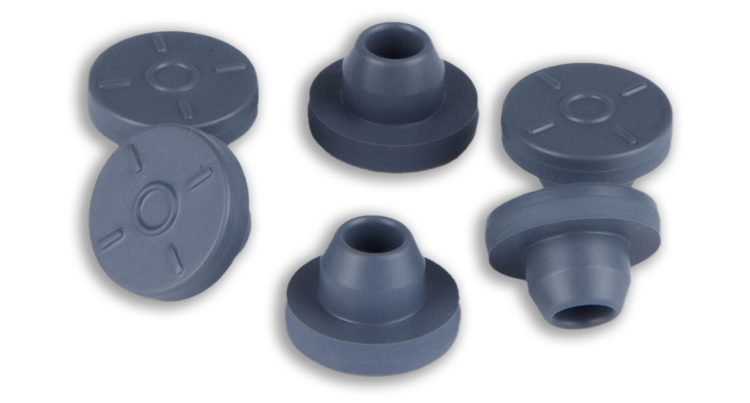Before we explore the significance of the rubber stopper, let's briefly examine the anatomy of a blood collection tube. Blood collection tubes, also known as blood collection containers or vacutainers, are essential tools for collecting and preserving blood samples. These tubes consist of several components, including the tube itself, an anticoagulant or clot activator, and a rubber stopper.
The Role of Medical Rubber Stoppers
Sealing and Preservation: The primary function of the medical rubber stopper is to create an airtight seal within the blood collection tube. This seal is crucial for preserving the integrity of the blood sample. It prevents contamination, evaporation, and the loss of sample quality during storage and transportation.
Blood-Material Compatibility: Medical rubber stoppers are designed to be compatible with blood components, ensuring that they do not interact with or leach harmful substances into the blood sample. This compatibility is essential for accurate test results.
Closure and Inversion: Medical rubber stoppers facilitate the closure of the blood collection tube after the sample is collected. They also allow for safe tube inversion to mix the anticoagulant or clot activator with the blood, depending on the required test. This ensures that the sample remains viable for laboratory analysis.
The Manufacturing Process
The production of medical rubber stoppers for blood collection tubes is a precise and quality-controlled process. Here are some key steps involved:
Raw Material Selection: High-quality medical-grade elastomers, such as butyl rubber or bromobutyl rubber, are chosen for their excellent sealing properties and compatibility with blood samples.
Formulation and Compounding: The selected rubber material is mixed with various additives and curing agents to achieve the desired characteristics, such as elasticity, chemical resistance, and biocompatibility.
Molding and Shaping: The rubber compound is shaped into the specific design of the stopper, ensuring it fits the blood collection tube securely. These molded stoppers often have features like wings or flanges for easy manipulation by healthcare professionals.
Sterilization: The rubber stoppers undergo a rigorous sterilization process to ensure that they do not introduce any microorganisms into the blood sample.
Quality Control: Stringent quality control tests are performed on the rubber stoppers to ensure they meet industry standards for sterility, extractables, and compatibility with blood samples.
Medical rubber stoppers in blood collection tubes are essential to the accuracy and reliability of diagnostic tests and patient care. These small yet mighty components ensure that blood samples are collected and preserved with precision, ultimately leading to accurate diagnostic results and better patient outcomes. As healthcare continues to advance, the role of medical rubber stoppers in ensuring the quality of blood samples remains crucial, making them an unsung hero in the world of modern medicine.



 English
English Español
Español


.jpg?imageView2/2/w/500/h/500/format/jpg/q/100)






